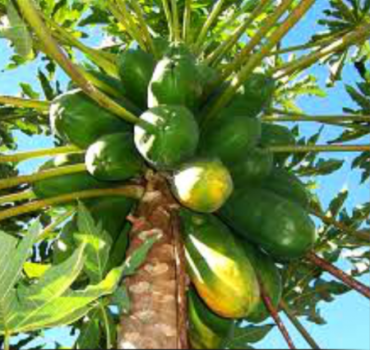Pawpaw, scientifically known as carica papaya, is a succulent fruit of a large plant of the Caricaceae family. Pawpaws are oblong green fruits that have tiny, black, lima-bean-shaped seeds and are prized for their irresistible flavor, which is described as a tropical blend of mango, banana, berries, and pineapple.

It is locally known in Nigeria as Ibẹpẹ among the Yorubas, mbukpa in Igbo, okwuru-ezi in Effik, and gwanda in Hausa.
Ripe pawpaw is usually creamy and custard-like in texture. It is embodied with diverse nutritional constituents such as enzymes (papain), chymopapain, carpasemire, vitamin C, vitamin A, beta-carotene, benzylserenol (seeds), and sugar (fruit), moisture, protein, fat, minerals, fiber, carbohydrates, to mention a few.
A recent study conducted by scientists from the College of Public Health and Medical Sciences, Jimma University, titled “Papaya: A gifted nutraceutical plant – a critical review of recent human health research”, observed the nutritional potential of the fruits noting that each part like root, stem, leaf, flower, fruit, seed, rinds, and latex has its own nutraceutical properties.
The research led by Karunamoorthi Kaliyaperumal, stated that the pawpaw serves as food, cooking aid, and ethnomedicine to prevent and treat a wide range of diseases and disorders. It has also been traditionally used as an appetite enhancer, meat tenderizer, purgative, medicinal acne, abortifacient, and vermifuge.
The study further explained that a series of scientific attempts were made to authenticate the nutraceutical properties of papaya. These studies validated that the papaya has antiplasmodial, antitrichochramal, antitrichomonal, anti-dengue, and anti-cancer activities. They have also exhibited that papaya possesses antiseptic, antiparasitic, anti-inflammatory, antidiabetic, and contraceptive features. It helps in the management of sickle-cell anemia, HIV, heart diseases, and digestional disorders too.
Eating pawpaw seeds is toxic
Ripe pawpaws will be fully soft and speckled with black. The easiest way to eat one is to cut the ripe fruit in half across the middle, squeeze the flesh from the skin into your mouth, then spit out the seeds. Don’t eat the skin or roots, which contain toxins.
The pawpaw fruit’s skin and seeds can be toxic, both have proven toxic to humans. In fact, according to a Purdue University fact sheet on the fruit, the seeds contain vomit-inducing alkaloids in the endosperm. And if the seeds are chewed, a poison is released and they can wreak havoc on your digestive system.
Medicinal effects of pawpaw leaves
Papaya leaf is often consumed as an extract, tea, or juice and has been found to treat symptoms related to dengue fever. Other common uses include reducing inflammation, improving blood sugar control, supporting skin and hair health, and preventing cancer.
Side effects of pawpaw
Visit your doctor or any closest physician immediately if any of these unlikely but serious side effects occur: severe stomach/abdominal pain, nausea/vomiting, slow heartbeat, severe drowsiness, and inability to move. When papaya is taken in large doses, it may infrequently cause serious irritation and ulcers in the esophagus.
Eating the fruit might cause hives, nausea, vomiting, headache, or faintness in some people
Pawpaw and stomach upset
While papaya is a source of fiber and is good for digestive health, eating too many may have a laxative effect, causing diarrhea and an upset stomach.
Pawpaw in pregnancy
Most health experts advise pregnant women to avoid eating papaya as the papaya seeds, roots, and infusion of the leaves can harm the fetus. Unripe papaya fruit has a high concentration of latex that can cause uterine contractions.













